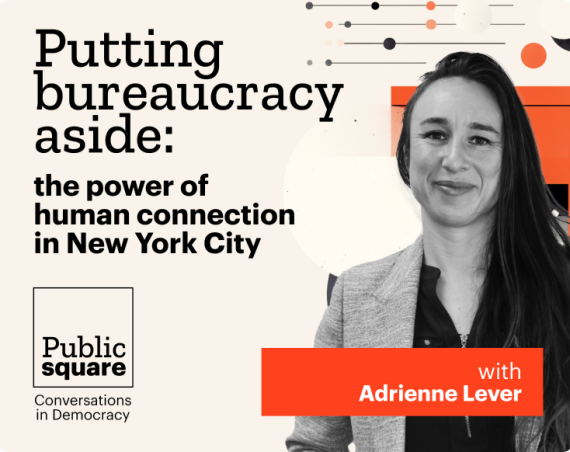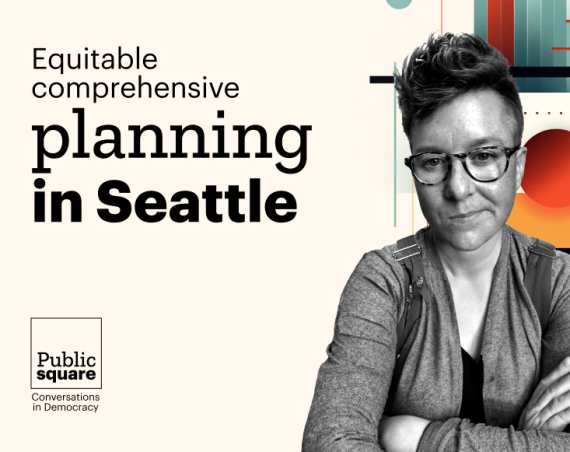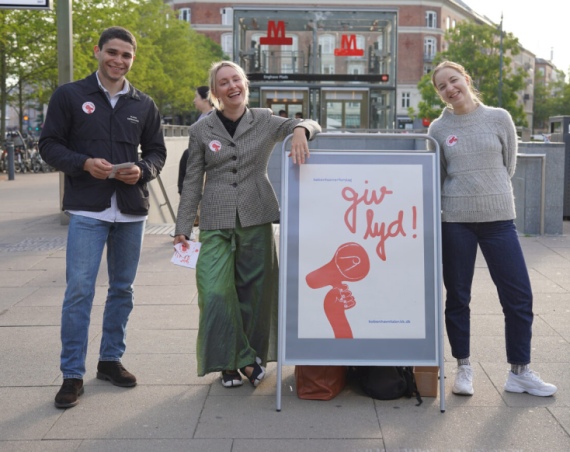In-person town halls have long been the foundation of community engagement for local governments. A tried and tested method for engagement, in-person meetings provide a moderated forum for people to voice their opinions directly to their officials. But they are far from perfect. In fact, they can be quite exclusionary and can skew governments’ views on what their community (or the loudest ten voices in the room) cares about. With the addition of digital engagement, governments see a 12x increase in resident engagement, including from under heard groups.
In our increasingly digital world, and as public officials seek to reach broader and more inclusive audiences, in-person town halls alone are simply not able to achieve the level of participation and equitable representation required to build true democratic processes.
They don’t have clear feedback loops, needed to encourage participation
In a country largely divided across partisan lines and plagued with low voter turnout, it will take work to build a culture of engagement to get – and keep – residents involved. When it comes to in-person meetings, without a strong feedback loop to create continuous information and engagement they can have a high time and effort cost with seemingly low benefit, significantly limiting their reach. And unless you attend the following meetings, it’s also difficult to track a policy’s next steps.
What can help turn the tide? Better opportunities for engagement, and clear feedback loops so that people feel their opinions are being heard and see a direct impact for contributing to real policy action. A digital community engagement platform can help you structure projects alongside clear phases and timelines so that participants can always see what has happened, what stage the project is in currently, and when they can expect next steps to take place.
Work, family, and other commitments can make in-person engagement unattainable
Imagine getting an email about your city’s next town hall to vote on improvements to your child’s favorite park – you immediately think of 5 things to say, but also know there’s no chance you can make it the meeting between work and your kid’s soccer game. Consider getting a notification for a meeting about water drainage improvements that’s taking place in the middle of your shift at work – two bus transfers away – meaning there’s no chance you can voice your concerns about the way storms have been impacting your home.
Or what if you don’t have enough money for bus fare or an extra car to make the meeting? Transportation limitations can be a significant roadblock and tend to disproportionately affect already marginalized communities, meaning that their views aren’t equally considered during in-person town halls.
Enter digital community engagement. Throughout the course of the pandemic, much of the population became accustomed to conducting business and socializing online, as it could all be done from the safety and comfort of your home. According to Vonage, half (47%) of consumers worldwide have increased their use of digital channels to engage with businesses and service providers and 87 percent expect to maintain or increase this level. A digital community engagement platform brings this concept to local government, and increases the ability for town halls and other policy initiatives to reach a wider and more inclusive audience.
Let’s look at those scenarios from a digital angle. Imagine getting an email to vote on improvements to your child’s favorite park – you click on the link in the email and quickly type and submit a message with your five ideas on the platform. Consider getting a notification about a meeting on water drainage improvements that’s taking place in the middle of your shift at work. You can’t make the meeting live, but you can watch the recording once you get home and voice your concerns in the comments about the way every storm has been affecting your home, and interact with your neighbor’s ideas too.
Online engagement gives everyone a chance to have their voices heard, no matter where they are. As a trusted and accessible forum to provide feedback, digital platforms can increase engagement, inclusion, and trust in your decision-making.
In-person town halls are not dead, but need to be complemented by other methods
The barriers to entry for in-person meetings that are outlined above are only a few of a hundred different scenarios, but they all mean that discussions and decisions made are not equitable or inclusive. Even if each barrier only limits a handful of people, it means voices are going unheard, and any voice unheard is a missed opportunity for learning and taking action.
Many local governments turned to digital solutions at the height of the pandemic, and that transformation has forced them to rethink the way they communicate with their communities. This is a moment to continue writing a new chapter in our democratic history, to use digital engagement in addition to town halls to run more inclusive, participatory, and representative community engagement projects so that decisions are made in a way that whole communities can benefit and thrive.
Returning to the old way of doing things – to a total dependence on in-person interaction – would be a flaw in our democratic model. Now is the time to continue accelerating our cities’ recovery, pioneering new routes for community members to exercise their democratic rights, and for governments to tap into collective intelligence like never before.





